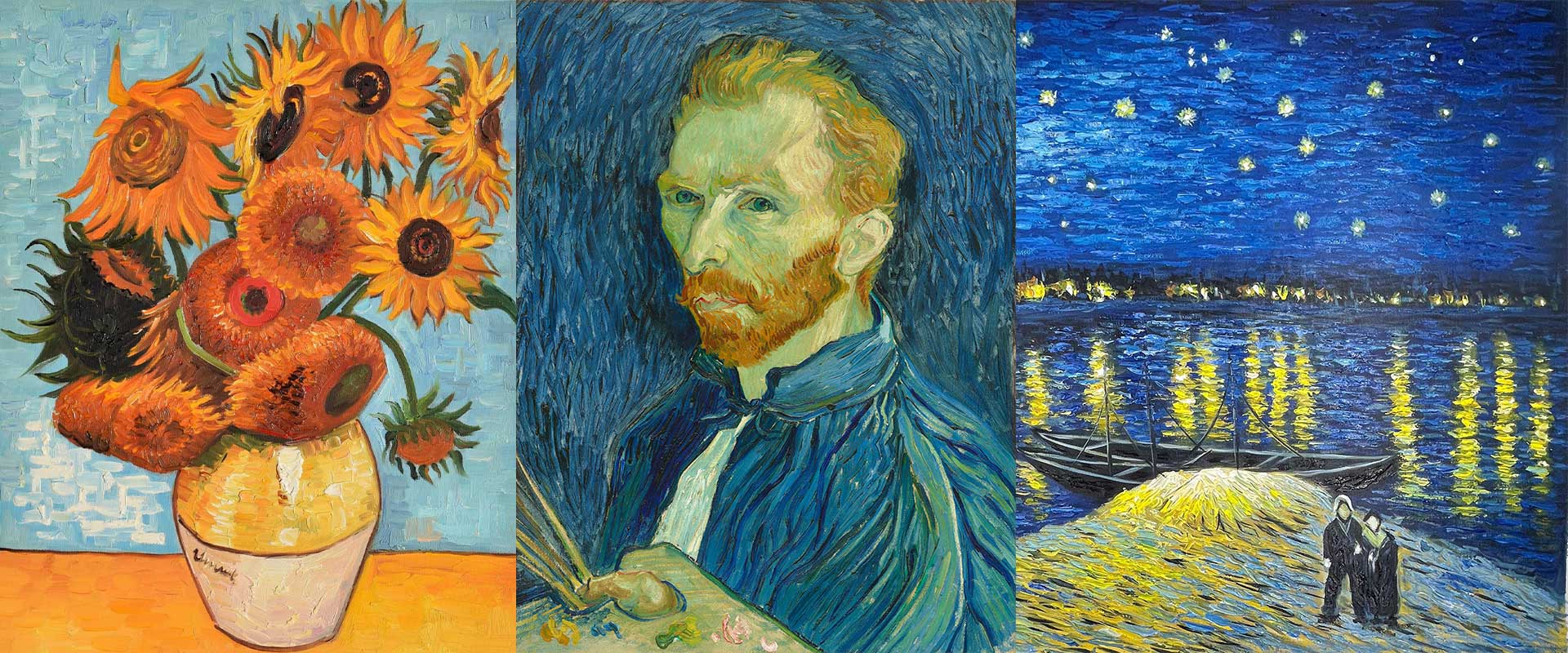Vincent van Gogh is often hailed as one of the most brilliant and innovative artists the world has ever seen. But what exactly made him a genius? Was it his swirling skies, his vivid color palette, his emotional depth—or something more profound?
Despite selling only one painting during his lifetime, Van Gogh created a visual language so distinct and powerful that it reshaped the course of modern art. In this article, we uncover the key elements that made Vincent van Gogh an artistic genius, from his expressive techniques to his enduring influence.
1. He Painted Emotion, Not Just Reality
Van Gogh’s genius wasn’t about technical perfection—it was about honesty and emotion. Rather than replicating what he saw, he painted what he felt.
Take The Starry Night, for example. It’s not a literal depiction of the night sky outside his asylum window—it’s a spiritual and emotional interpretation, filled with longing, movement, and turbulence. Van Gogh once said:
“Instead of trying to reproduce exactly what I see before me, I make more arbitrary use of color to express myself more forcefully.”
This ability to channel raw emotion into visual form was revolutionary—and deeply human.
2. A Master of Brushwork and Movement
Van Gogh’s technique was wildly distinctive. He used thick, visible brushstrokes (a technique called impasto) to give his paintings physical texture and energy.
Traits of his brushwork:
- Short, rhythmic strokes that seem to move across the canvas
- Swirls, curves, and directional lines that create motion
- Layers of paint built up to convey emotion and tension
Unlike many artists of his time, Van Gogh allowed the viewer to see the process—every stroke revealed intent, urgency, and feeling.
3. Bold Use of Color and Symbolism
Van Gogh’s color choices weren’t guided by realism—they were symbolic and expressive. He used color to communicate mood, message, and inner turmoil.
Examples:
- Yellow: Joy, hope, and vitality (Sunflowers, The Yellow House)
- Blue: Peace, melancholy, and spiritual longing (The Starry Night, Self-Portraits)
- Green and red: Tension and emotional extremes
His fearless palette set him apart from the muted tones of earlier art and helped lay the groundwork for movements like Fauvism and Expressionism.
4. Relentless Curiosity and Self-Education
Though largely self-taught, Van Gogh was obsessively committed to learning. He copied the works of Millet and Rembrandt, studied Japanese woodblock prints, and exchanged ideas through hundreds of letters—especially with his brother Theo.
He constantly experimented with:
- Composition and perspective
- Color theory and contrast
- New materials and subjects
His growth as an artist was both rapid and astonishing. In just 10 years, he evolved from crude sketches to emotionally charged masterpieces.
5. Deep Psychological Insight
Van Gogh’s genius also lay in his ability to expose his inner world. His portraits, landscapes, and still lifes often reflect his own struggles with mental health, loneliness, and hope.
Each painting is more than visual—it’s a window into the human condition. Works like Wheatfield with Crows (1890) are interpreted as reflections of despair, while Almond Blossom (1890) radiates joy and new beginnings.
This depth of psychological honesty gives his work timeless resonance.
6. A Legacy That Transcended His Lifetime
Van Gogh died in 1890, believing he was a failure. Yet within a few decades, he became one of the most influential artists in history.
His genius was recognized posthumously because:
- He broke artistic norms and paved the way for modern art
- He inspired artists like Matisse, Derain, and Munch
- His work evokes universal feelings—pain, beauty, longing, and resilience
Today, his paintings are priceless cultural treasures, and his story continues to inspire millions.
Experience Van Gogh’s Genius at Home
Celebrate Van Gogh’s visionary legacy with our curated Vincent van Gogh wall art collection. From The Starry Night to Sunflowers, each print brings home the spirit of one of art’s greatest minds.
Conclusion
So, what made Vincent van Gogh an artistic genius? It wasn’t fame, fortune, or formal training—it was his unwavering drive to express the soul through paint. With fearless technique, emotional vulnerability, and a vision all his own, Van Gogh changed the way we see art—and ourselves.
His genius lives not just on canvas, but in the hearts of those moved by his raw, honest, and unforgettable creations.





